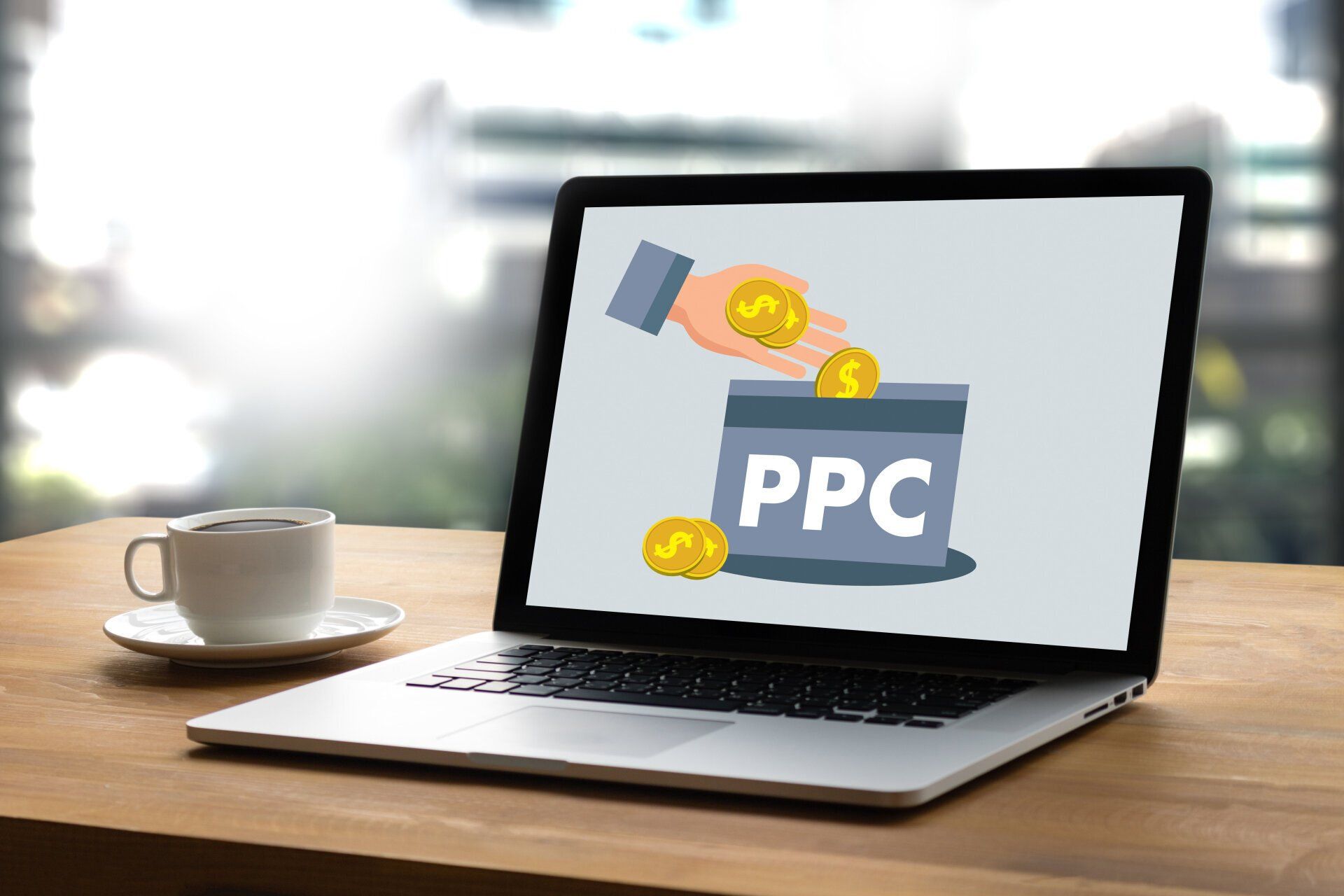Elevate Your Business with a Modern Website Design
Modern Website Design
Introduction:
In the digital era, your website is the virtual front door to your home services business. Its design plays a pivotal role in shaping first impressions, building trust, and converting visitors into loyal customers. This blog unveils a step-by-step guide to help you transform your website into a powerful tool that speaks volumes about your commitment to quality.
Step 1: First Impressions Matter
Your website is the first point of contact for potential customers. A well-designed website reflects the values and professionalism of your plumbing business. Invest in a professional, user-friendly, and visually appealing design that creates a positive first impression.
The Digital Storefront:
Consider your website as the virtual storefront of your plumbing business. Just as a physical store's appearance influences customer perception, the design of your website plays a pivotal role in shaping the initial impressions of online visitors.
Immediate Visual Impact:
Your website has a matter of seconds to capture the attention of visitors. The visual elements—layout, color scheme, and imagery—are the first cues that users encounter. A well-designed website ensures an immediate positive visual impact, encouraging users to explore further.
Reflecting Professionalism and Trust:
A professionally designed website reflects the credibility and trustworthiness of your plumbing business. Potential customers are more likely to engage with a business that invests in a polished online presence. Design elements that convey professionalism create an impression of reliability and expertise.
User-Friendly Navigation:
Beyond aesthetics, the functionality of your website is crucial. User-friendly navigation ensures that visitors can easily find the information they seek. Intuitive menus, clear calls to action, and a logical flow contribute to a positive user experience, encouraging longer visits and exploration.
Mobile Responsiveness:
With the majority of internet users accessing websites via mobile devices, mobile responsiveness is non-negotiable. A website that adapts seamlessly to various screen sizes ensures a consistent and positive experience for users, regardless of the device they use.
Showcasing Services Effectively:
Your website is a platform to showcase the range and quality of your plumbing services. Through effective design, you can highlight key services, present case studies, and use visuals to convey the outcomes of your work. This showcases your capabilities and encourages potential customers to choose your services.
Building Brand Identity:
Consistent design elements across your website contribute to building a strong brand identity. From your logo to the color palette, these visual cues create a cohesive and memorable representation of your plumbing business. A well-established brand identity fosters recognition and trust.
Optimizing for Conversion:
Strategic design isn't just about aesthetics; it's about optimizing for conversion. Thoughtfully placed calls to action, contact forms, and service information contribute to a seamless journey for visitors, guiding them toward taking the desired actions, whether it's requesting a quote or scheduling a service.
Step 2: Mobile Responsiveness is Non-Negotiable
In a mobile-driven world, a fully responsive website is essential. Ensure your site looks and functions seamlessly on all devices for an optimal user experience. Google rewards mobile-friendly sites with better search rankings, making mobile responsiveness non-negotiable.
The Mobile-First Reality:
We live in a mobile-first world, where a significant portion of internet users accesses websites via smartphones and tablets. Ignoring the mobile audience means missing out on a substantial share of potential customers. Mobile responsiveness is the key to meeting the needs of this growing demographic.
User Experience Across Devices:
Mobile responsiveness ensures a consistent and positive user experience across various devices. Whether someone visits your plumbing website on a desktop computer, a smartphone, or a tablet, the design adapts seamlessly, providing a cohesive and user-friendly interface.
Google's Mobile-First Indexing:
Google, the primary search engine, has shifted to mobile-first indexing. This means that Google primarily uses the mobile version of a website for indexing and ranking. A mobile-responsive website is more likely to rank higher in search results, positively impacting your online visibility.
Faster Page Load Speed:
Mobile-responsive design often goes hand-in-hand with optimized page load speed. Mobile users, in particular, expect swift loading times. A faster website not only enhances the user experience but is also a factor considered by search engines in ranking websites.
Reducing Bounce Rates:
A non-responsive website can lead to high bounce rates, where visitors quickly leave after encountering usability issues on mobile devices. Mobile responsiveness ensures that visitors stay engaged, exploring your plumbing services without frustration, ultimately reducing bounce rates.
Local Searches on Mobile Devices:
Many users turn to their mobile devices for local searches, especially when seeking services like plumbing. A mobile-responsive website is essential for capturing these local search opportunities. It provides potential customers with easy access to your contact information, services, and location.
Enhancing SEO Performance:
Mobile responsiveness is a significant factor in search engine optimization (SEO). Google prioritizes mobile-friendly websites in search results, improving your chances of being discovered by users searching for plumbing services in your area. Enhanced SEO performance is crucial for online visibility.
Competitive Advantage:
In a competitive business landscape, having a mobile-responsive website becomes a competitive advantage. Potential customers are more likely to engage with businesses that offer a seamless and accessible experience across devices. It reflects a commitment to meeting the evolving needs of the modern consumer.
Step 3: Navigation Should Be Intuitive
User-friendliness is paramount. Ensure your website's menu and layout are intuitive, with information organized logically. Use clear headings, subheadings, and menu items to help users find what they're looking for effortlessly.
The Gateway to User Experience:
Consider website navigation as the gateway to a positive user experience. Intuitive navigation ensures that visitors can effortlessly find the information they seek, enhancing their interaction with your plumbing business website.
First Impressions Matter:
When users land on your website, they form first impressions within seconds. If navigation is confusing or convoluted, visitors may quickly become frustrated and navigate away. Intuitive navigation sets the stage for a positive first impression, encouraging users to explore further.
Clear and Concise Menus:
The menu is the roadmap for users to explore your plumbing services. Ensure that your menus are clear, concise, and logically organized. Use straightforward language that aligns with the expectations of your audience, making it easy for them to navigate without confusion.
Prioritize Essential Information:
Identify the most critical information your visitors are seeking, and ensure it is prominently featured and easily accessible. Whether it's information about services, pricing, or contact details, prioritize elements that guide users toward conversion.
Responsive Design Across Devices:
Intuitive navigation extends to responsiveness across various devices. Whether users access your website on a desktop, smartphone, or tablet, the navigation should adapt seamlessly. Responsive design ensures a consistent and user-friendly experience, regardless of the device.
Limit Menu Items for Simplicity:
While offering comprehensive information is essential, a cluttered menu can overwhelm users. Limit the number of menu items to essential categories, making the navigation experience more straightforward. Submenus can further organize detailed information without overcrowding the main menu.
Clear Calls to Action (CTAs):
Effective navigation extends to clear calls to action (CTAs) throughout your website. Whether it's scheduling a service, requesting a quote, or exploring your blog, strategically placed CTAs guide users through their journey, encouraging them to take the desired actions.
User Testing for Optimization:
Prioritize user testing to optimize navigation based on real user feedback. Conduct usability tests to identify any pain points or areas of confusion. Regularly refine and update navigation elements to ensure an intuitive experience as user preferences and behaviors evolve.
Step 4: Optimize for Conversions
A good-looking website should also convert visitors into customers. Strategically place call-to-action buttons (CTAs) that guide visitors to take desired actions, such as requesting a quote or scheduling a service. Use trust signals like customer testimonials and certifications to instill confidence in potential clients.
Understanding the Conversion Funnel:
Conversion optimization begins with understanding the journey your visitors take—from the first interaction to becoming loyal customers. Visualize this journey as a funnel, with each stage presenting an opportunity for optimization and guiding users toward the ultimate conversion.
Strategic Placement of Calls to Action (CTAs):
Calls to Action (CTAs) are the navigational markers guiding users toward conversion. Strategically place CTAs throughout your website, ensuring they align with the user's journey. Whether it's scheduling a service, requesting a quote, or subscribing to updates, CTAs should be clear and compelling.
Create Persuasive Landing Pages:
Landing pages are dedicated spaces designed to drive specific actions. Create persuasive landing pages for key services or promotions. Tailor the content to address user needs and provide a seamless path toward conversion. A well-crafted landing page significantly enhances the likelihood of user action.
Simplify Conversion Forms:
Streamline conversion forms to remove any unnecessary barriers. Opt for simplicity in form design, asking only for essential information. A shorter and more straightforward form encourages users to complete the conversion process without feeling overwhelmed.
Visual Hierarchy and Readability:
The visual hierarchy of your website plays a crucial role in guiding users. Prioritize important elements, such as CTAs and key information, through design techniques like color contrast and size. Additionally, ensure readability by using clear fonts, concise language, and well-organized content.
Build Trust with Testimonials and Trust Badges:
Trust is a cornerstone of successful conversions. Incorporate customer testimonials and trust badges on conversion-focused pages. Positive reviews and affiliations with industry organizations build credibility, alleviating potential concerns and instilling confidence in users.
A/B Testing for Continuous Improvement:
Embrace A/B testing to fine-tune your conversion strategies. Test different variations of elements such as CTAs, page layouts, and form designs to identify what resonates best with your audience. Continuous testing and optimization ensure your website stays aligned with evolving user preferences.
Responsive Design for Cross-Device Conversions:
Conversion optimization extends to cross-device experiences. Ensure that your website is responsive, providing a seamless conversion process across desktops, smartphones, and tablets. A consistent and user-friendly experience contributes to higher conversion rates.
Step 5: Speed Matters
Website speed is critical. A slow-loading site can drive visitors away and impact search engine rankings. Optimize performance by compressing images, minimizing code, and leveraging content delivery networks. A fast website keeps users engaged and improves SEO.
The Need for Speed:
Speed is more than a matter of convenience; it's a fundamental aspect of user experience. A fast-loading website ensures that visitors can access information swiftly, fostering positive impressions and reducing the risk of users abandoning your site due to sluggish performance.
Impacts on User Experience:
User experience is intricately tied to website speed. Slow-loading pages frustrate users, leading to dissatisfaction and a higher likelihood of bounce rates. A speedy website, on the other hand, contributes to a seamless and enjoyable user experience, encouraging prolonged engagement.
Mobile Responsiveness and Speed:
With the prevalence of mobile browsing, the importance of speed is magnified. Mobile users, in particular, expect rapid page loading. A mobile-responsive and fast website ensures that you meet the expectations of users accessing your plumbing business site on smartphones and tablets.
Influence on Search Engine Rankings:
Speed is a factor that search engines consider when ranking websites. Google, for instance, emphasizes page speed as part of its ranking algorithm. A faster website is more likely to rank higher in search results, positively impacting your online visibility and attracting more potential customers.
Conversion Rates and Speed:
The correlation between website speed and conversion rates is undeniable. Users are more likely to convert into leads or customers when the conversion process is swift and efficient. Optimize your website speed to facilitate seamless interactions and encourage users to take desired actions.
Optimizing Images and Multimedia:
Images and multimedia elements, while visually appealing, can contribute to slower load times if not optimized. Compress images, use lazy loading techniques, and carefully select multimedia elements to balance visual richness with optimal performance. This ensures a fast and engaging user experience.
Content Delivery Networks (CDNs):
Implementing Content Delivery Networks (CDNs) is a strategic move to enhance website speed. CDNs distribute your website's content across multiple servers worldwide, reducing the physical distance between the server and the user. This results in faster loading times, especially for geographically diverse audiences.
Regular Performance Monitoring and Optimization:
Website speed is not a one-time consideration; it requires ongoing attention. Regularly monitor your website's performance using tools like Google PageSpeed Insights or other analytics platforms. Identify areas for improvement and optimize continually to ensure peak performance.
Step 6: User Testing is Invaluable
Ensure your website is user-friendly through testing. Enlist individuals unfamiliar with your site to perform specific tasks. Their feedback can uncover usability issues you might have missed, helping you refine the user experience.
Putting Your Users in Focus:
At the heart of a successful website is a deep understanding of your users. User testing is the lens through which you gain insights into how real users interact with your plumbing business website. It's a proactive approach to ensuring that your online presence resonates with the needs and preferences of your audience.
Identifying Pain Points and Opportunities:
User testing unveils the hidden dynamics of your website, revealing both pain points and untapped opportunities. By observing users navigate through your site, you can pinpoint areas of confusion, bottlenecks, or missed opportunities for engagement. This invaluable feedback informs strategic improvements.
Enhancing User Experience (UX):
The user experience is a pivotal element of website success. Through testing, you can gauge how users feel while interacting with your site, identify friction points, and understand what elements contribute to a positive experience. This knowledge guides UX enhancements for a more enjoyable and seamless journey.
Optimizing Website Navigation:
Navigation is the backbone of user interaction. User testing provides real-world insights into how users navigate your plumbing business website. Are they finding information effortlessly, or are there stumbling blocks? This information guides the optimization of menus, pathways, and calls to action for intuitive navigation.
Validating Design Choices:
Design decisions impact user perception and engagement. User testing serves as a litmus test for your design choices. Whether it's the color scheme, layout, or imagery, observing user reactions validates or prompts adjustments to ensure your design resonates effectively with your target audience.
Assessing Mobile Responsiveness:
With the prevalence of mobile browsing, assessing mobile responsiveness is crucial. User testing on various devices allows you to observe how your website performs across different screens. Insights gained from mobile testing inform responsive design adjustments to cater to users on smartphones and tablets.
Testing Calls to Action (CTAs):
Calls to Action (CTAs) are the gateways to conversions. Through user testing, you can evaluate the effectiveness of your CTAs. Are they compelling? Do users understand the next steps? Adjustments based on real user feedback optimize CTAs, ensuring they align with user expectations and encourage desired actions.
Iterative Improvement Through Feedback:
User testing is not a one-time event; it's a continuous cycle of improvement. Collecting and analyzing feedback allows you to implement iterative changes. Regular testing ensures that your website evolves in tandem with shifting user behaviors, preferences, and technological advancements.
Conclusion:
Your website is your online storefront and a key player in attracting customers to your home services business. Implementing these strategies is not just a suggestion but a necessity. If you have questions or need guidance on enhancing your website's design and effectiveness, reach out. I'm here to help you achieve exceptional results in your home services marketing endeavors. Here's to building an outstanding website that speaks volumes about your commitment to quality!










